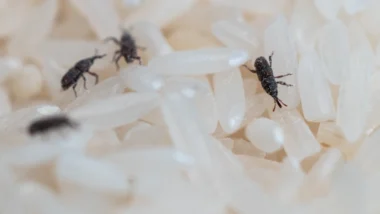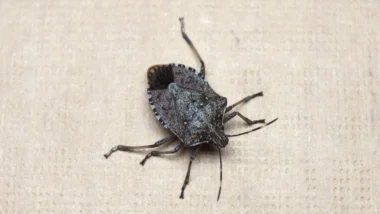During the late summer and early fall months, Wisconsin experiences a notable increase in wasp in Wisconsin populations, including yellowjackets, paper wasps, and bald-faced hornets. This surge typically occurs in August and September, when these insects have fully established their colonies.
The types of wasps in Wisconsin are a fascinating and sometimes fearsome part of the state’s insect life, and their behaviors, nesting habits, and interactions with humans are essential during this time. To better understand and manage the risks these insects pose, it’s vital to explore their life cycles, behavioral changes, and the unique characteristics of various species, as well as why it’s important to contact wasp control services in Wisconsin before things get out of hand.
Are you having trouble with wasps lately?
Contact Us For A Free Consultation
The Life Cycle of Different Types of Wasps in Wisconsin: From Spring to Fall
Wasp in Wisconsin begin their life cycle in the spring with a single queen emerging from hibernation. After finding a suitable nesting site, the queen starts laying eggs, eventually hatching into workers.
These workers are responsible for expanding the nest, foraging for food, and protecting the colony. By late summer, the colony can house thousands of individuals, with each wasp playing a specific role within the social hierarchy.
As the season progresses, the queen’s focus shifts from producing workers to producing reproductive individuals—males and new queens. This change in focus coincides with the dwindling availability of food sources. Social wasps, particularly yellowjackets, begin scavenging for human food, increasing their interactions with people.
The Rise of Aggressive Behavior in Late Summer
One of the most noticeable changes in social wasp behavior occurs as fall approaches. Yellowjackets, particularly, become more aggressive and opportunistic when food becomes scarcer. Their natural diet, consisting primarily of other insects, fruit, and nectar, is more complex, prompting them to search for alternative food sources such as sugary drinks, ripe fruit, and even garbage.
This behavior in different types of wasps in Wisconsin is why people often encounter yellowjackets buzzing around picnics, barbecues, and outdoor gatherings in late summer and early fall. Unlike bees, which primarily forage for nectar and pollen, yellowjackets are more likely to be attracted to human food, increasing the likelihood of stings.
If you feel that there is a rise in wasps with aggressive behavior, call wasp control services in Wisconsin immediately.
Minimizing the Risk of Stings
To reduce the risk of stings from different types of wasps in Wisconsin, it’s essential to minimize the presence of social wasps in outdoor spaces. Yellowjackets and other social wasps are drawn to sugary substances, so people should avoid leaving drinks, fruit, pet food, or bird feeders outside, especially during peak wasp activity. Additionally, keeping trash bins tightly sealed and cleaning up spills promptly can go a long way in preventing these insects from becoming a nuisance.
People should also be cautious when engaging in outdoor activities such as mowing the lawn or gardening, as these actions can unintentionally disturb hidden wasp nests, especially in areas like bushes, trees, or underground. If a nest is discovered, it’s best to consult a professional pest control service to safely remove it, as attempting to do so without proper knowledge and tools can lead to severe stings and dangerous situations.
🐝The Bald-Faced Hornet: A Close Relative with a Sting
While yellowjackets are perhaps the most well-known social wasp in Wisconsin, bald-faced hornets also play a significant role in the state’s wasp population. Despite their name, bald-faced hornets are technically a type of yellowjacket. However, they have distinct black and white coloration and are generally larger than their yellowjacket relatives.
Bald-faced hornets are known for their large, football-shaped paper nests, often built in trees, shrubs, or structures like houses. These insects can exhibit aggressive behavior, particularly when their nests are threatened. Their sting is painful and can cause significant swelling and discomfort.
Interestingly, bald-faced hornets are beneficial insects because they help control other pest populations, such as flies and caterpillars. Still, their aggressive nature means that people should exercise caution when encountering their nests.
🐝Social Wasp Defense Mechanisms: Why They Sting
The primary reason that social wasps, including yellowjackets and bald-faced hornets, sting is to defend their nests.
Unlike bees, which only sting once before dying, wasps can sting multiple times. This ability makes them more dangerous, especially when a colony perceives a threat. When a wasp feels threatened, it releases a pheromone that signals other colony members to join the defense. This can result in swarming and multiple stings, particularly dangerous for individuals allergic to wasp venom.
Despite their ability to sting repeatedly, social wasps do not sting indiscriminately. They typically reserve this behavior for moments when they perceive their nests or themselves to be in imminent danger.
🐝The Collapse of Social Wasp Colonies in Fall
As fall progresses, social wasp colonies decline due to colder temperatures and the season’s first hard frost. The queen and the workers die, leaving only the new queens to hibernate through the winter. These queens will start the cycle anew the following spring by establishing new colonies.
The decline of wasp colonies is a natural process that helps balance insect populations. However, in the weeks leading up to their collapse, wasps can become more aggressive as they struggle to find food. This heightened aggression usually coincides with increased human-wasp interactions, making it essential for people to remain vigilant during this time.
🐝Solitary Wasps: The Gentle Giants of Wisconsin
While social wasps often get a bad reputation due to their aggressive nature, Wisconsin is also home to several species of solitary wasps that are far less threatening. Two of the most notable solitary wasps in the state are the giant cicada killer wasp and the great golden digger wasp. These huge, impressive insects are often mistaken for more dangerous species like the invasive Northern Giant Hornet, but they pose little to no threat to humans.
🐝Giant Cicada Killer Wasp
The giant cicada killer wasp is one of the largest wasps found in Wisconsin, measuring up to two inches in length. Despite their intimidating size, these wasps are not aggressive and rarely sting humans. As their name suggests, they prey on cicadas, paralyzing them with their sting and using them to feed their larvae. These wasps create underground caves, laying their eggs alongside the paralyzed cicadas.
🐝Great Golden Digger Wasp
The great golden digger wasp is another solitary species native to Wisconsin. With its striking black and orange coloration, this wasp is often mistaken for a hornet. However, like the cicada killer, the great golden digger wasp is non-aggressive and beneficial to the ecosystem. It preys on grasshoppers and other insects, which it captures and paralyzes to feed its offspring. These wasps also create burrows in the ground, where they raise their young.
Key Takeaways
Wisconsin’s wasp season is an intriguing but challenging time for residents. The increase in social wasp populations, particularly yellowjackets and bald-faced hornets, during August and September can lead to more frequent interactions with humans. Understanding these insects’ life cycles, behaviors, and nesting habits can help people minimize the risk of stings and coexist more peacefully with wasps. Additionally, appreciating the role of solitary wasps like the giant cicada killer and great golden digger wasp can help dispel fears and highlight these insects’ critical ecological roles.
Call Nexus Pest Solutions Today for Help!


